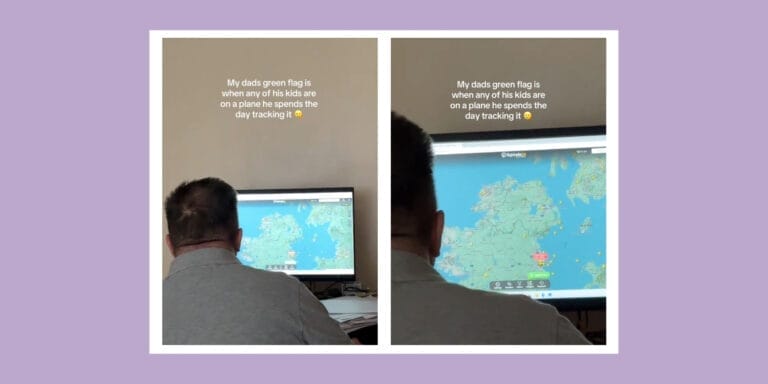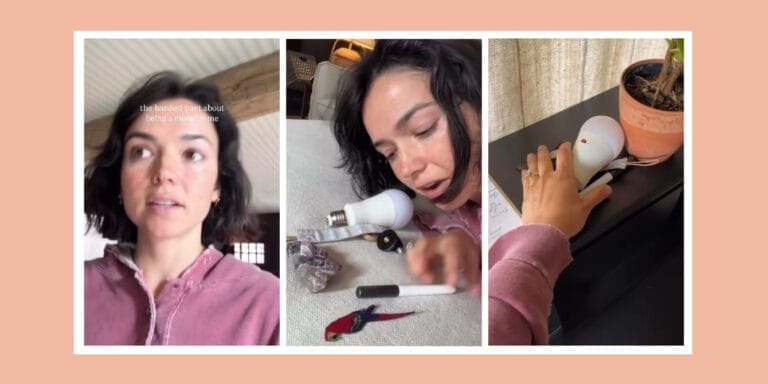How to use screen time to raise empathetic and kind kids

When we control technology—and not the other way around—the potential is enormous.
Table of Contents
It’s 5 pm. You just got home from a busy day at work, dinner is nowhere close to being started, and the afternoon shenanigans have taken ahold of your little ones. They need some time to decompress from their busy day and, let’s be honest, you need a few moments to transition into the last part of yours, too.
Your child asks, “Mooooom? Can I watch a show?”
Cue parenting inner-dilemma.
You want to say yes, but you also have fears about technology. How much is too much? Is it bad for my children? Will it isolate my children from me?
Sara DeWitt, the vice president of PBS KIDS Digital, said in her TED Talk that this last question is a big concern for parents. We desperately want to be connected to our children, and for our children to be connected to the world.
Unfortunately, she says, the “fear and skepticism about these devices hold us back from their potential.” The truth is, high-quality educational screen time can actually build connections (more on that in a minute). Even more exciting, did you know that the right screen time can help your child develop empathy?
Empathy is a skill, but as a society, we are losing it. A shocking study found that empathy drops by about 40% by the time kids get to college. In a world fraught with inequities, divisiveness and conflict, rebuilding empathy is paramount. Motherly mamas agree. In the 2019 State of Motherhood survey, you told us that your top priority was to nurture kindness with your children.
But how do we do this? Telling our child to “be a kind person” is great, but in order to truly understand, they need to see empathy in context. By using digital content as a prompt for communication and conversation, it becomes one of the many tools we have at our disposal to help guide our children on the path to becoming empathic, kind people.
Enter PBS KIDS.
Raun D. Melmed, MD, FAAP, a developmental and behavioral pediatrician, and author of the Monster Diary series told us that, “our children have unprecedented access to wonderful educational opportunities through digital media. Interactive, nonjudgmental apps can enhance cognitive development (processing and organization, visual-spatial awareness, pattern recognition and even reading), social and emotional awareness, and even moral development.”
When we control technology—and not the other way around—the potential is enormous.
The American Academy of Pediatrics says that “media can have educational value for children starting at around 18 months of age, but it’s critically important that this be high-quality programming, such as the content offered by Sesame Workshop and PBS.”
Researchers looked at the impact of watching PBS KIDS’ series, Daniel Tiger’s Neighborhood, and the results were pretty inspiring. Children who watched the show for 30 minutes each day for two weeks demonstrated improved empathy, the ability to recognize emotions and increased social confidence.
But, here’s the catch: In order to experience this growth, children needed to have recurrent conversations about what they saw with their parents.
Nicole Dreiske, Executive Director of the International Children’s Media Center and author of The Upside of Digital Devices: How to Make Your Child More Screen Smart encourages parents to utilize screen time “in the same way that they would use story time: to build trust, emotional intelligence, and empathy.” By spending just 10 minutes discussing what happened in a show, children can experience significant benefits.
Knowing the science behind the benefits of screen time is great. But when that afternoon struggle hits, it can be hard to remember exactly what to do, so DeWitt encourages parents to make a plan—here’s how.
How to make a screen time plan for your family
Ask yourself the following two questions:
1. What do I want my kids to get out of their digital media time?
Do you want them to have an opportunity to be creative and think outside the box? Pull up PBS KIDS ScratchJr. Is there something going on at home or in school that requires learning about sharing? Share the “Daniel Shares his Tigertastic Car” episode of Daniel Tiger’s Neighborhood with them.
Consider your goals, and then choose media accordingly.
2. What do I want my kids to get out of their digital media time? How can it support our family schedule and priorities?
It is okay to factor your needs into the equation, mama. Deriving benefit from your child’s screen time is no need to feel guilty. Go ahead and start dinner, or send that email, or yes (gasp), put your feet up and relax for a bit.
Once you’ve figured out your ‘why,’ it’s time to consider the ‘how.’
1. Communicate the plan to your kids (and be clear about limits).
Kids do best with clear boundaries and expectations. This will be especially important if you are implementing changes to how screen time is done in your home.
You could say, “You can play the Wild Kratts game for 30 minutes while I work on dinner, and then we are going to go outside and flap our wings as bats do! Do you think we should eat mosquitos for dinner like they do?!”
Before you start the show, Dreiske recommends planting the communication seed: “Today we’re going to notice what we’re feeling and what the characters are feeling.”
2. Discuss what your kid played or watched.
When screen time is over, strike up a conversation. Dreiske suggests open-ended questions that help to “[create] a special space in which your child feels safe enough emotionally to confide in you about their experiences. Let the child’s emotion or feelings ‘lead’ the talk rather than being obscured by your feelings.” You can try the following starters:
- How did you feel when… ? Why?
- How do you think that character felt?
- What if that happened to one of your friends?
3. Find a balance of activities.
Like everything in life, screen time is best in moderation. It is important that children know that screen time is one of the many options they have for activities. Exercise, outdoor play, reading, coloring and more are also incredibly important.
If there is a show or game your child particularly loves, DeWitt suggests finding the non-screen time version of it. “For example, if the kids in Dinosaur Train start a nature collection, suggest a nature walk through your neighborhood after they’ve watched. If your child likes Ready Jet Go!, use the Ready Jet Go Space Explorer app to look at the stars together and then continue exploring the night sky away from the screen. In other words, we can make digital media as a jumping off point for family fun!”
Sara DeWitt writes, “It helps to remember digital media is simply a tool, just like books, toys and art supplies. As parents, we have the power to decide how and when to use these tools with our kids.”
When used thoughtfully, and with love, high-quality screen time is an incredibly powerful way to foster empathy and kindness in the next generation.
This article is sponsored by PBS KIDS. Thank you for supporting the brands that support Motherly and mamas.





































